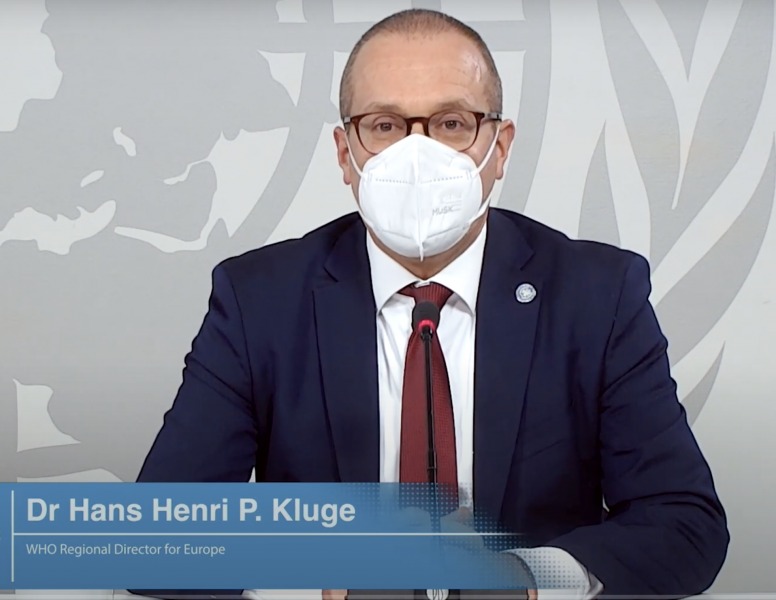
Statement - Update on COVID-19: Omicron wave threatening to overcome health workforce
Communicable Diseases
January 19, 2022
Good morning, good afternoon, good evening,
We have entered 2022 with the countries of Europe and central Asia still under intense pressure from COVID-19.
Today, the Omicron variant represents a new west to east tidal wave sweeping across the Region, on top of the Delta surge that all countries were managing until late 2021. How each country now responds must be informed by its epidemiological situation, available resources, vaccination uptake status and socioeconomic context.
The Region saw over 7 million newly reported cases of COVID-19 in the first week of 2022, more than doubling over a 2-week period.
As of 10 January, 26 countries report that over 1% of their population is catching COVID-19 each week.
Mortality rates remain stable and continue to be highest in countries with high COVID-19 incidence, combined with lower vaccination uptake.
Fifty of the 53 countries in Europe and central Asia have now reported cases of Omicron. It is quickly becoming the dominant variant in western Europe and is now spreading in the Balkans.
At this rate, the Institute for Health Metrics and Evaluation (IHME) forecasts that more than 50% of the population in the Region will be infected with Omicron in the next 6–8 weeks.
Data collated in recent weeks confirms that Omicron is highly transmissible – because the mutations it has enable it to adhere to human cells more easily, and it can infect even those who have been previously infected or vaccinated.
Allow me to reiterate that the currently approved vaccines do continue to provide good protection against severe disease and death, including for Omicron.
But because of the unprecedented scale of transmission, we are now seeing rising COVID-19 hospitalizations. It is challenging health systems and service delivery in many countries where Omicron has spread at speed, and threatens to overwhelm in many more.
Once again, the greatest burden of responding to this pandemic is being carried by our health and care staff, and other essential frontline workers. They also carry the highest exposure to the virus. Acknowledging the huge lift by the health workforce, as we enter this third pandemic year, I call for more support for their mental health and well-being. Cater to their physical and mental well-being by listening and addressing their needs and concerns, by designating a mental health focal point or person in each facility, for example.
Please click here to read the original article and watch the video of the speech.